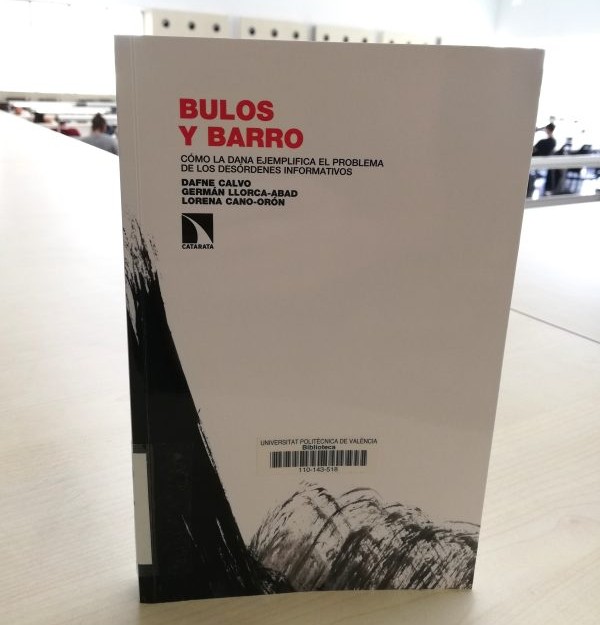Through an analysis that combines theory, lived experience and concrete examples, this publication explains the functioning of the communication ecosystem and the role of the media and citizenship. The book Bulos y barro, cómo la DANA ejemplifica el problema de los desórdenes informativos will be presented on Thursday, October 30, at 12.30 pm, at the Conference Room of the Gandia campus.
During the DANA disaster in Valencia, disinformation spread faster than the official alerts. Rumors, decontextualized videos, alarmist audios and fake news Bulos y barro, cómo la DANA ejemplifica el problema de los desórdenes informativos part of this experience to analyze, from a critical perspective, the keys to the information disorder in which we live.
MEDI, the model
The authors of the publication – Germán Llorca professor of the Gandia campus of the Universitat Politècnica de València (UPV), Dafne Calvo and Lorena Cano of the University of Valencia (UV) –propose an interpretative model of their own, which helps to understand the structural, economic and practical dynamics of current communication. “MEDI is a proposal of characterization of the technological-communicative context of our society. From it, we approach the deep reasons that explain the informational disorders, among which are the faults”, said Llorca.
The proposed model distinguishes three interconnected spheres: the pragmatic sphere, which has to do with users “immersed in accelerated communication processes that in reality they do not understand and in which they hand over, without being fully aware, their personal data,” explains Germán Llorca; the second is the economic one, focused on “communication companies trade with these data and compete for the attention of users” and the third is the structural sphere where we criticize the control of communication by some corporations, explains Germán Llorca.
Information chaos
Bulos y barro, cómo la DANA ejemplifica el problema de los desórdenes informativos it combines theory, experience and concrete examples to offer a clear explanation of why and how information chaos is installed. “These phenomena are not exclusive to communicative and informative emergencies (natural disasters, health emergencies…), but are typical of our technological and communicative context. What we did was to use the examples provided by the DANA as the guiding thread of our argument,” said Llorca.
In addition, the book raises fundamental questions about the impunity of the crime, the manipulation of public opinion and the growing discredit of journalism. Regarding the latter, “it is one of the consequences”, assures the author. “It should also be taken into account that the new generations do not consume information in traditional media and that a high percentage of the population accesses information only through social networks, where there is a very high profile that is not a journalist”.
For professor Llorca, not all news clippings are the same, “although most are designed to deceive and confuse public opinion”. When false news is installed in public opinion, it generates a feeling of mistrust and opens the door to authoritarian discourses. “It is a strategy to predispose citizens to accept and even demand a dictatorship. And this benefits, above all, the extreme right-wing parties and the right-wing parties that agree with them”.
Tragedy turned into a television show
When asked if disasters end up becoming a television spectacle, he is very clear: “the media and certain Internet figures take advantage of these situations in their struggle for attention. It must be taken into account that in these situations people are in urgent need of quality information to help them understand what is happening. And turning this into a show does not contribute to provide quality information”.
In the face of this misinformation, what alternatives do we have? According to Germán Llorca, professor and author along with professors Dafne Calvo and Lorena Cano of Bulos y barro, cómo la DANA ejemplifica el problema de los desórdenes informativos are members also of the MediaFlows Group. At the individual level, he recommends to maintain a critical attitude and always contrast the information, even when it confirms our beliefs. And at a collective level, he supports a stricter regulation: “that it is punishable to deliberately lie, regardless of the platform from which it is done; demand that social networks be more transparent in how they manage their algorithms and that they account for them when they contribute to disseminating false information or information that threatens human rights; demand digital and communicative literacy programs for the entire population”.
The book Bulos y barro, cómo la DANA ejemplifica el problema de los desórdenes informativos will be presented on Thursday, October 30, at 12.30 pm, at the Conference Room of the Gandia campus.

